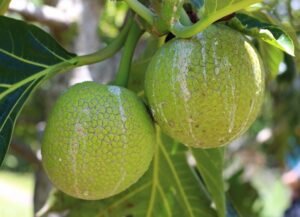Aloha and mahalo for your interest in the ‘Ulu Education Toolkit!
The ʻUlu Education Toolkit is meant to support educators in incorporating lessons about ʻulu into the classroom, school garden, and formal or informal learning environments. The Toolkit is designed as an interactive online database where educators and families can search and organize materials as needed by grade, subject matter, resource type, and/or academic standard.
This project is the result of a multi-year collaboration among the Hawai‘i ‘Ulu Cooperative (HUC), Hawai‘i Farm to School Hui/Hawai‘i Public Health Institute, the STEMS² Program at the University of Hawai‘i at Mānoa College of Education, and other community partners – including dozens of individual resource contributors drawing on the mana‘o, experience, and hard work of many organizations and individuals. The supplementary resources, videos, recipes, lessons, and unit plans share not only valuable knowledge about ‘ulu and other indigenous crops, but also the values of mālama ‘āina, ‘ike from both traditional and contemporary sources, and ola for Hawai‘i, especially for our keiki.
Access Hawaiian dictionaries here.
Download this guide as a slide deck here. (PDF version)
Before accessing content, please read this ʻUlu Toolkit Guide carefully and agree to the Terms of Use below.

E Ulu Kākou: Let’s ‘Ulu Together
A tiny little ʻokina can make a world of difference to the meaning of a Hawaiian word when added to or taken away. In our case, the words ulu and ʻulu both have significant meaning within the context of the ʻUlu Education Toolkit.
|
|
|
Without the ʻokina, ulu means to grow, increase, inspire, rise up, and spread. Ulu also refers to a grove or a collection of things such as stars, birds, boats, and trees. The importance of ulu can be seen in our traditional mele. Remarkable scholars and educators, Emerson, Malo, and Maiki Aiu Lake documented and practiced the following mele, respectively:
These mele are quite different in purpose and place, yet each shares notions around ulu – calling for collective growth and inspiration. The mele evoke the ʻike and guidance of kūpuna, honor the verdant ʻāina that surrounds us, and display respect and reverence to both. Through them, we see that “growing” in the traditional Hawaiian sense is collective, reciprocal, and interactive. Kānaka and ʻāina working together to rise up and be better.
This brings us to ʻulu. When the ʻokina proudly takes the lead in the word ʻulu, we’re talking about the ‘ono breadfruit.

About ʻUlu
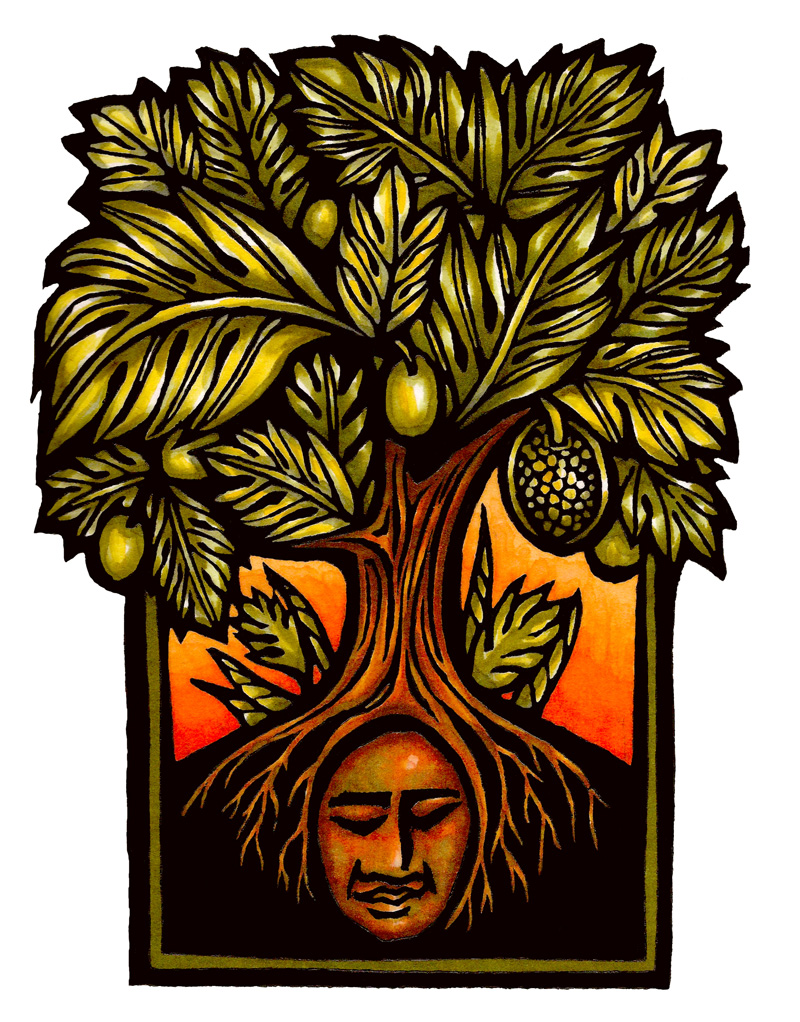
Moʻolelo of ʻulu were originally documented in English by Mary Kawena Pukui in Folktales of Hawaiʻi: He Mau Kaʻao Hawaiʻi. A project out of Hale Kuamoʻo of the University of Hawaiʻi at Hilo later produced the bilingual No ke Kumu ʻUlu: The ʻUlu Tree, which retells the origin story of ʻulu coming from the deity Kū to provide food security in times of famine.
History
ʻUlu is a traditional Polynesian staple that comprised an important part of Hawaiʻi’s food system before European contact, contributing to greater food self-sufficiency than the islands have today. Like elsewhere across the Pacific, colonization and globalization led to a sharp decline in the consumption of ‘ulu and other traditional staples in Hawai‘i.
At the same time, over the past 200 years the islands have seen reduced agricultural land use for local food production and rising health disparities, where native populations are disproportionately more likely to experience diet-related diseases such as obesity and Type II diabetes.
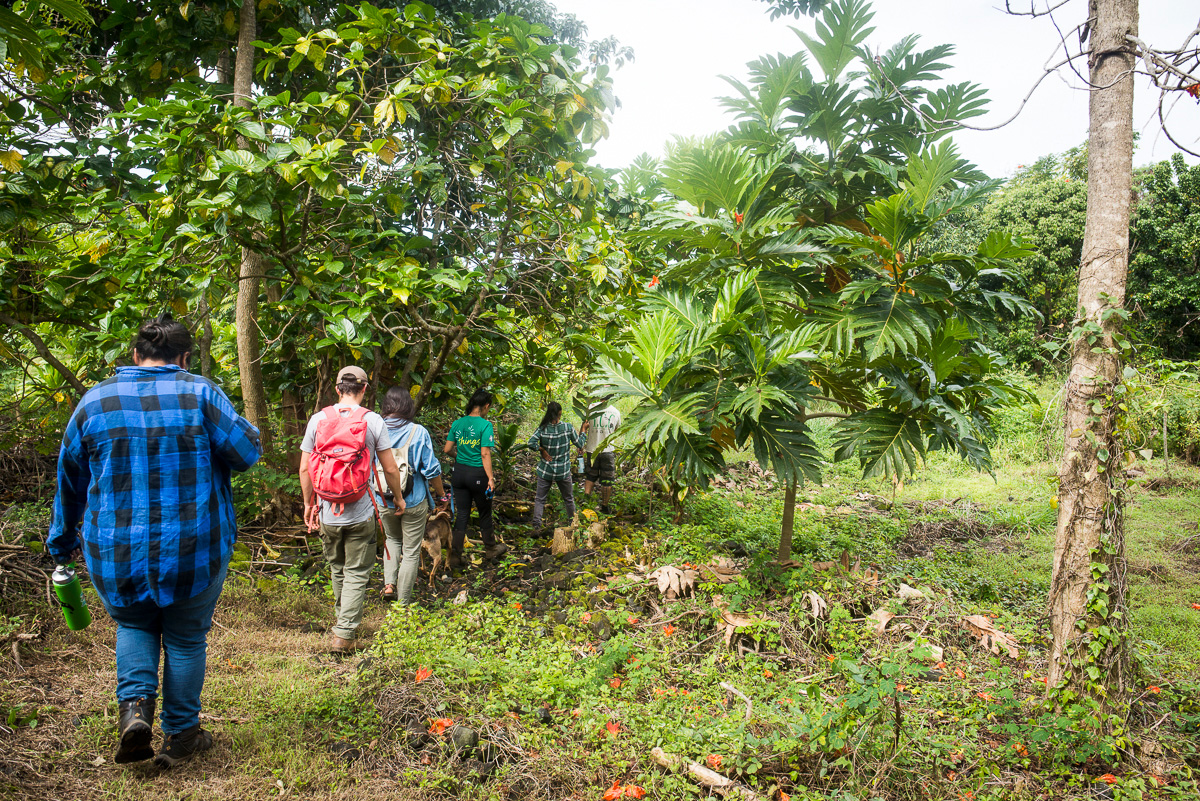
Nutrition
Although it is an ancient crop, ‘ulu can provide remedies to many of our modern problems. It is both a culturally important food source with a significant history in the islands, and among the most sustainable starches on earth because it grows on a perennial tree that sequesters carbon and provides relative climate resilience. From a nutritional standpoint, ‘ulu is a complex carbohydrate with more dietary fiber and some vitamins and minerals than the primary staples currently imported to Hawaiʻi (potatoes, wheat, and rice). It has been shown to help mitigate Type II diabetes when (re)incorporated as a dietary staple, and is extremely versatile from a culinary standpoint. The fruit can be eaten at all stages of its development; when very young it tastes like an artichoke heart, when mature like a potato, when semi-ripe like a sweet potato, and when fully ripe like a banana.
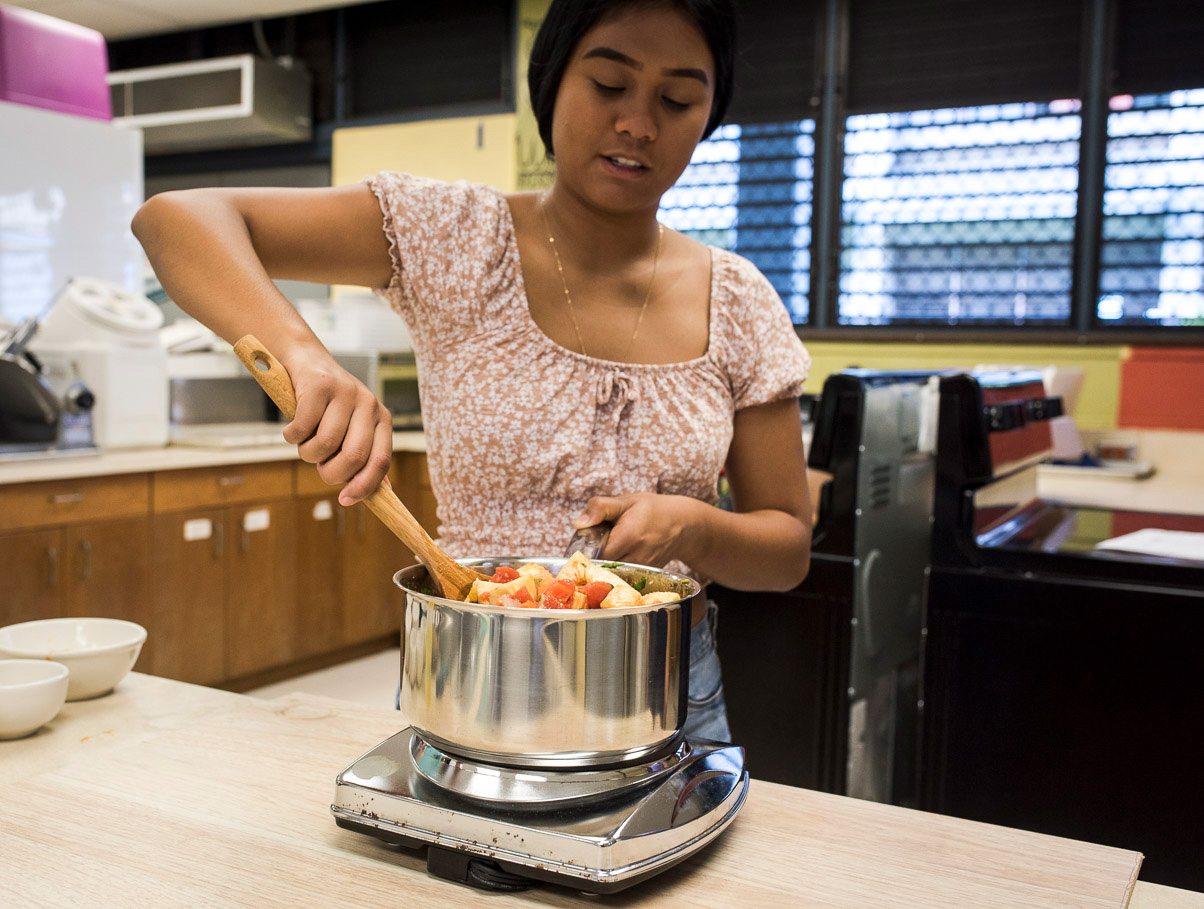
Why ʻUlu?
Over the past decade, a movement to revitalize underutilized indigenous crops such as ‘ulu has taken hold globally. Here in Hawai‘i, through persistent community advocacy for “farm to school”, the Hawai‘i State Department of Education (HIDOE) in 2019 put ‘ulu on its regular menu cycle in every public school cafeteria during the 2019-2020 school year!
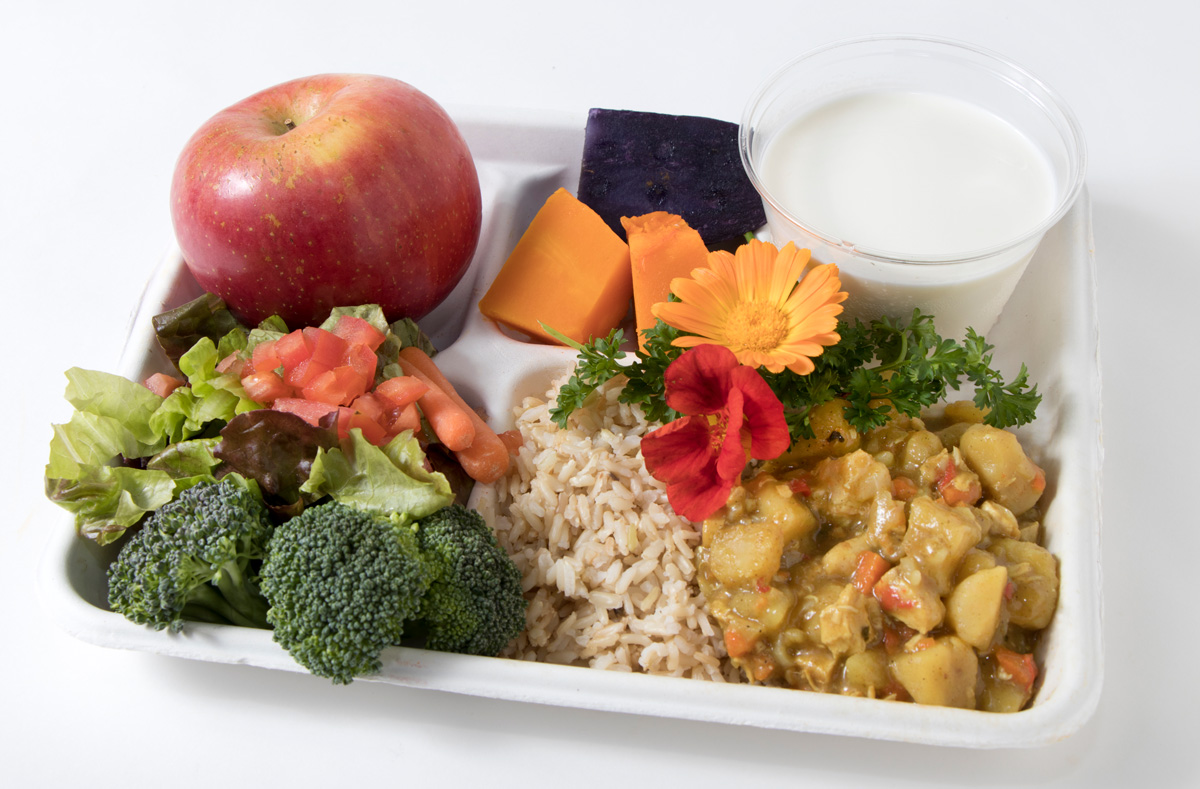
This marked an opportunity to not only reintroduce a healthy, traditional food source to the next generation but to teach them why it is important to understand the ways of the past, value diversity, care for our island home, and think critically about how we can all work together to envision and create a better future.

Growing with Gratitude
To the ʻike kūpuna that has fed our naʻau and allowed for us to grow a more sustainable and healthy Hawaiʻi, he leo mahalo kēia. To the many hands that have turned down to work in nurturing, feeding, and growing ʻulu and the ʻUlu Education Toolkit, he leo mahalo kēia. To the kumu and keiki who will learn together, inspire each other and uplift our lāhui, he leo mahalo kēia.


Partner With Us & Terms of Use
We hope you will find the ʻUlu Education Toolkit useful and invite you to not only try it out, but to contribute to its evolution and continuous improvement! Partner with us by:
- Downloading and using these materials (including all images and text)
- Contributing feedback on the educator discussion boards (Jamboards), linked as “Educator Discussion” under each resource.
- If you have any questions on how the Toolkit is organized or intended to be used, please reach out to us at ulueducationtoolkit@gmail.com.
Terms of Use:![]()
- Published under Creative Commons Attribution-NonCommercial-ShareAlike 4.0 International (CC BY-NC-SA 4.0)
- Full License
- Under this license, you are free to share (copy and redistribute) and adapt (remix, transform, build upon) the material in this toolkit following these terms:
- Attribution– you must give appropriate credit (cite resource name, author and date accessed), a link to the license, and indicate if changes were made. This may be done in any reasonable manner but not in a way which suggests you are endorsed by toolkit creators.
- NonCommercial– material may not be used for commercial purposes.
- ShareAlike– if you remix, transform or build upon the material you must distribute under the same license (CC BY-NC-SA 4.0) as the original.
- No additional restrictions– you may not apply legal terms or measures which prevent others from doing anything the license permits.

Resource Contributors
Amalie Dorn
Farm to Keiki
Gwyn Dora Studios
Hawaiʻi ‘Ulu Cooperative (HUC)
Hōkūao Pellegrino, Kamehameha Schools Maui and Nohoʻana Farm
Kamaile Academy
Kamehameha Schools
Kōkua Hawaiʻi Foundation
Kona Pacific Public Charter School
Lauren DeMent
Michelle O’Byrne, Iao Intermediate School
Mill Valley Film Group
Noa Kekuewa Lincoln
Pacific Islands Climate Change Education Partnership (PCEP)
The Breadfruit Institute
The Hawai‘i Island School Garden Network


